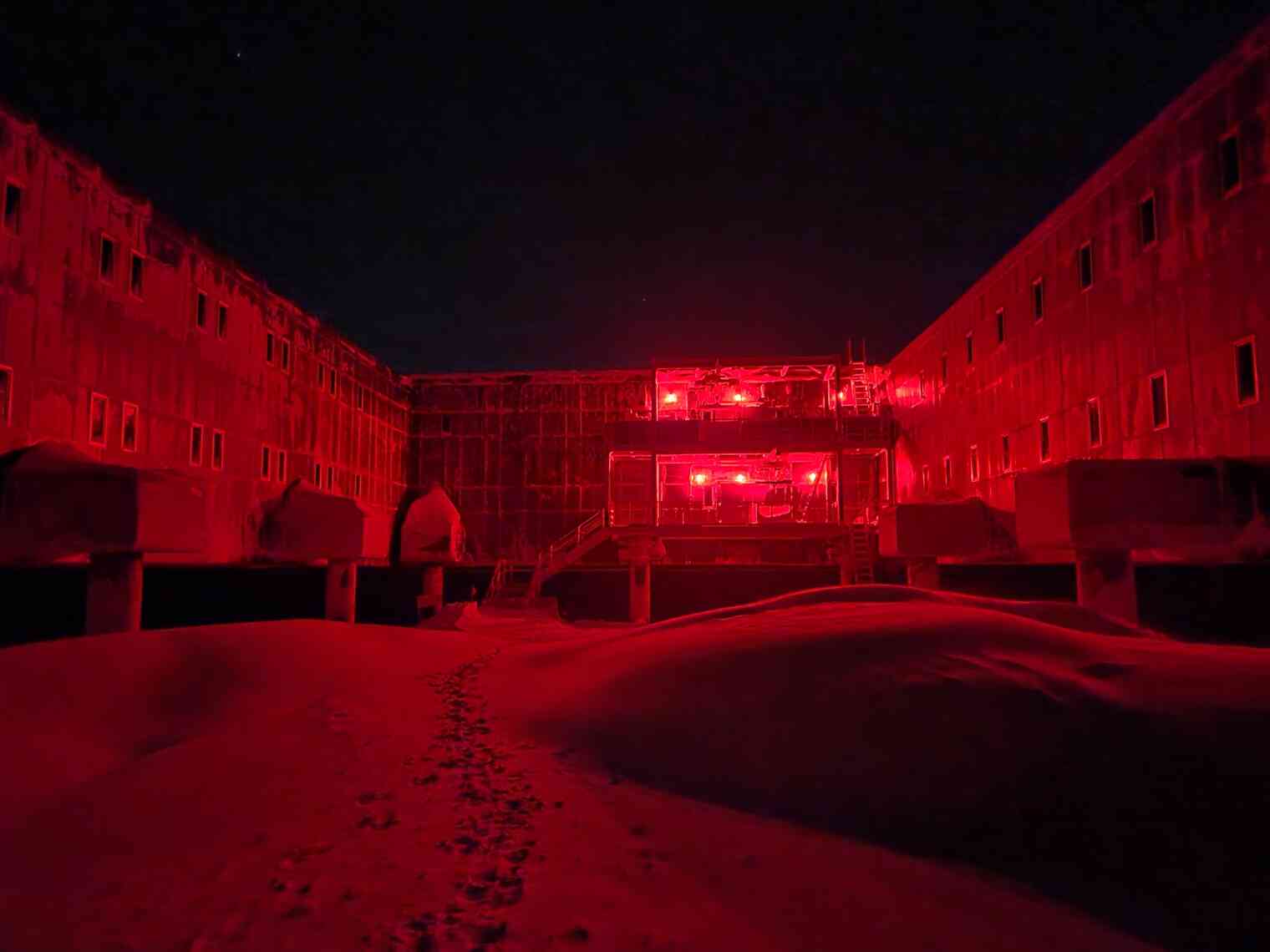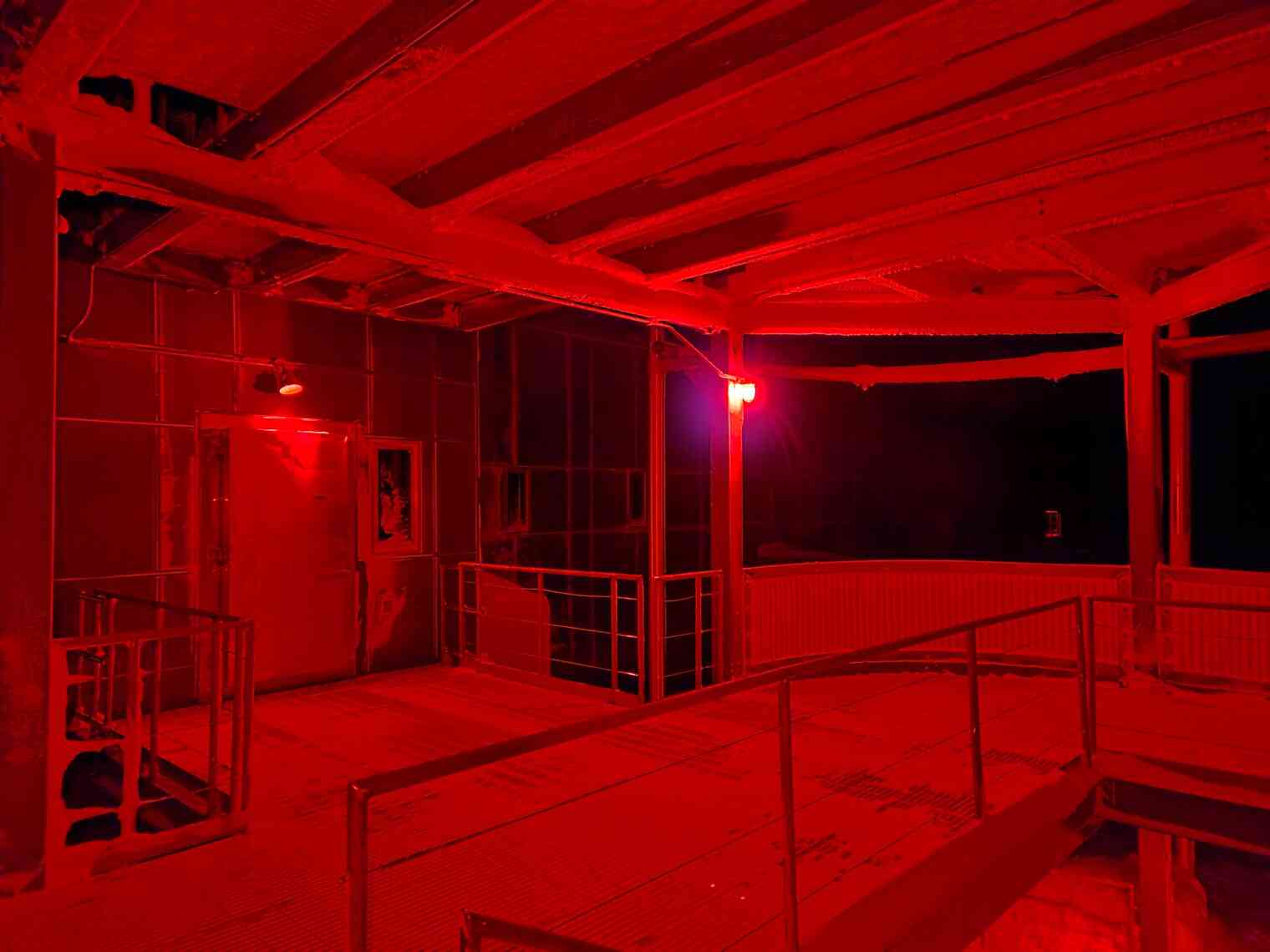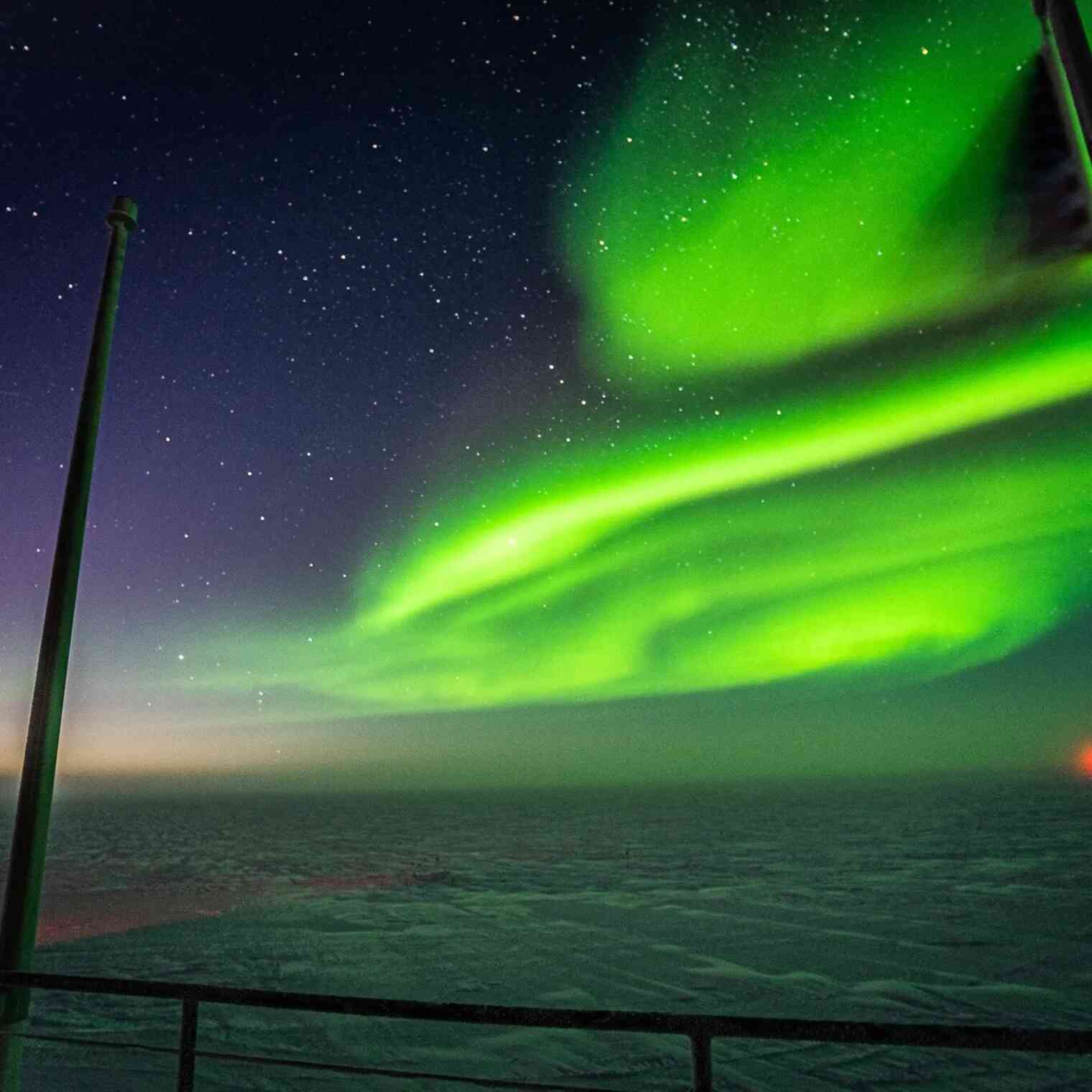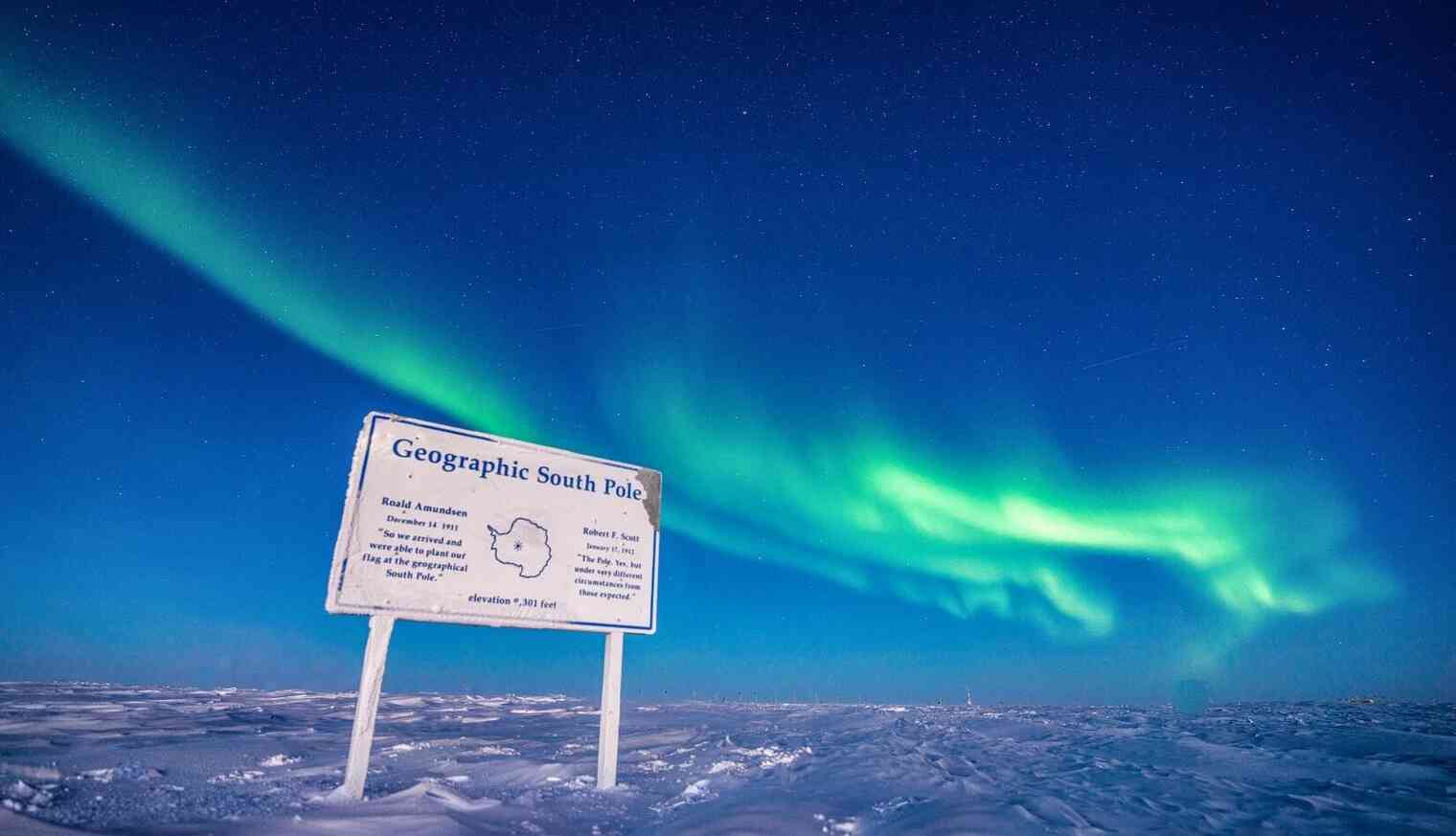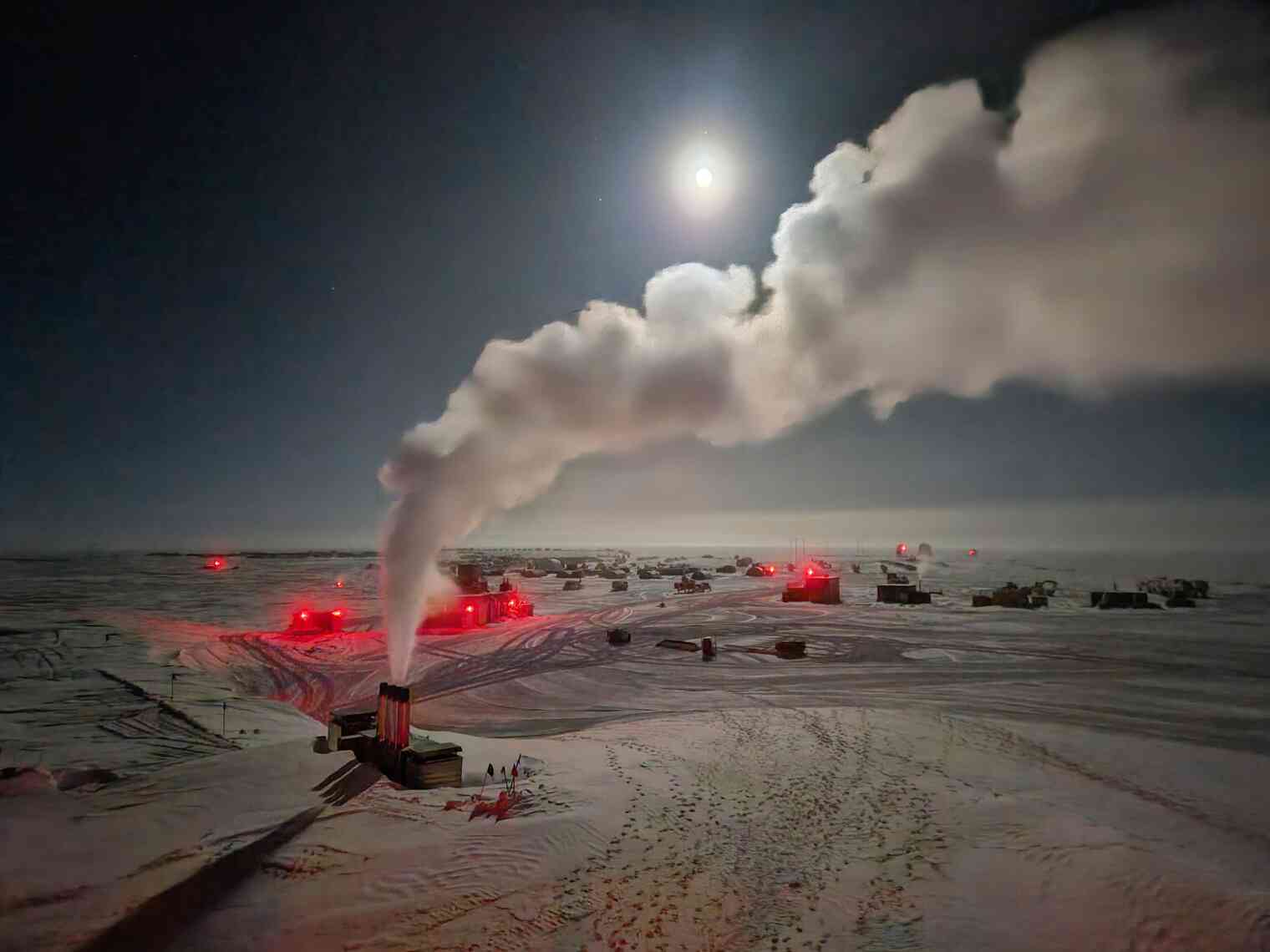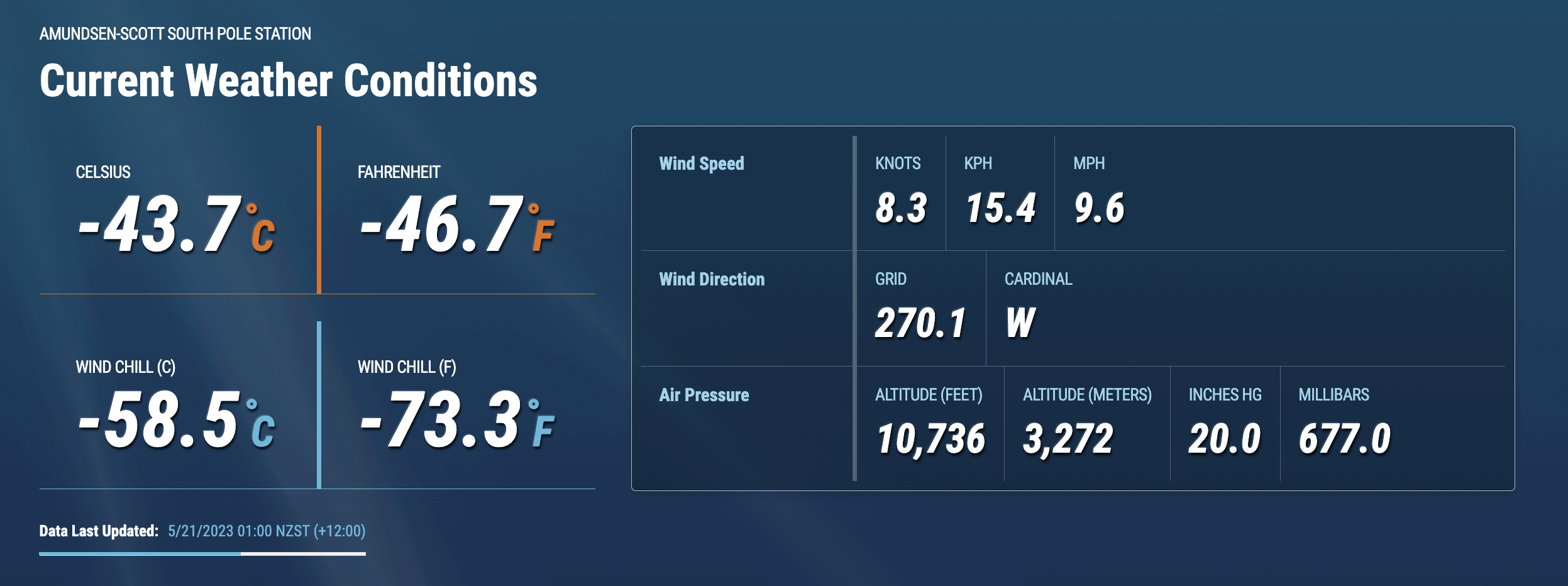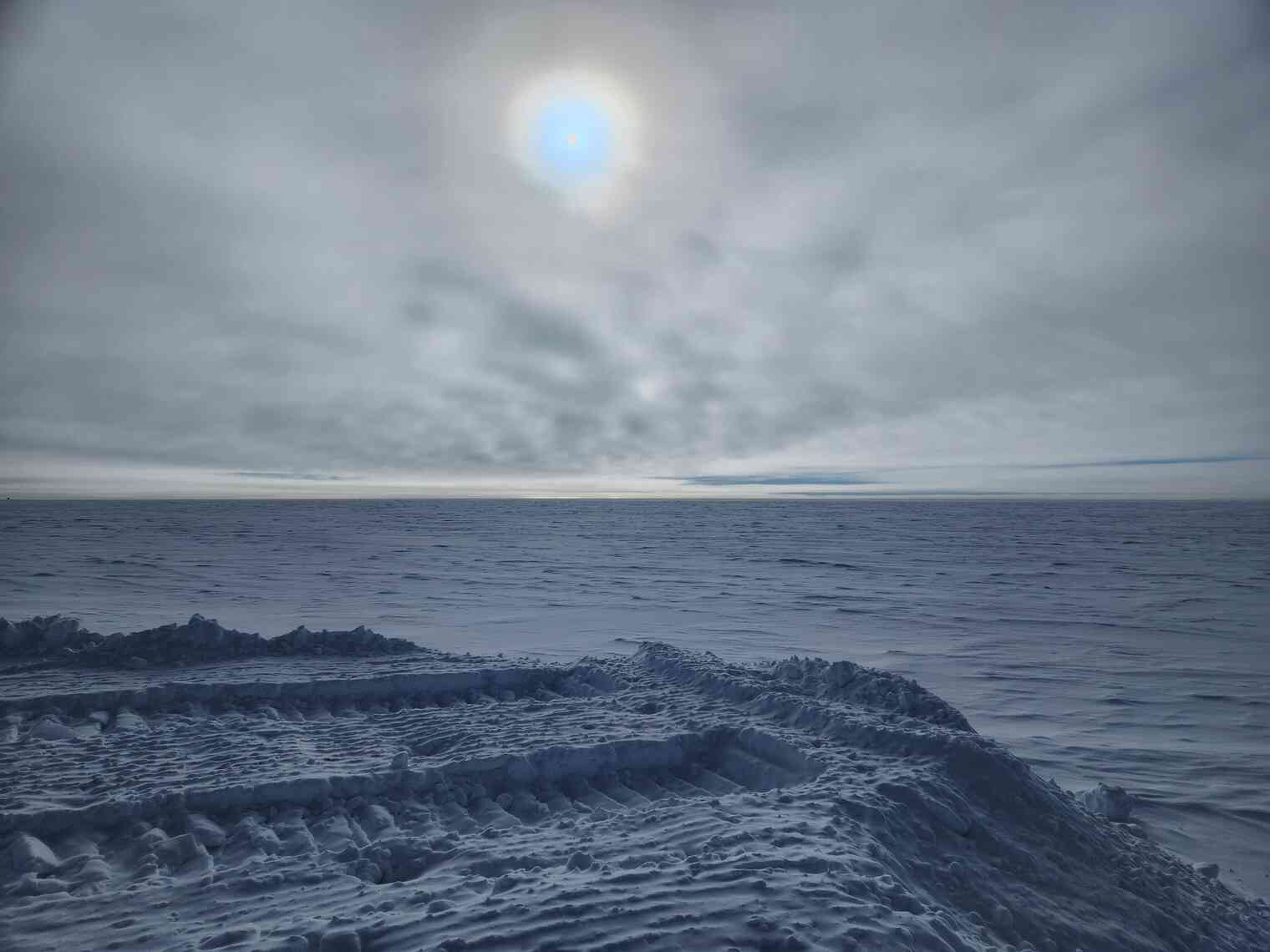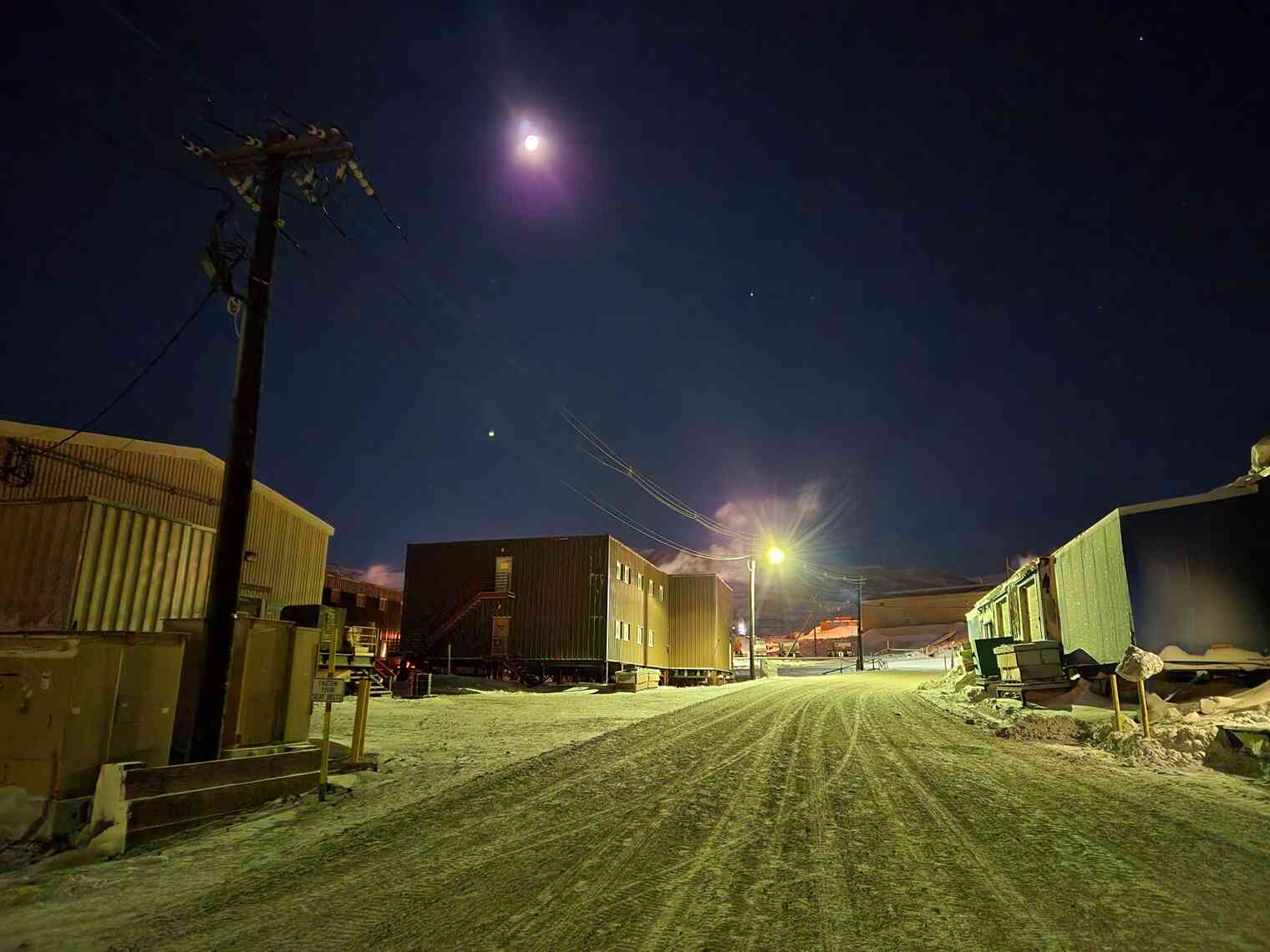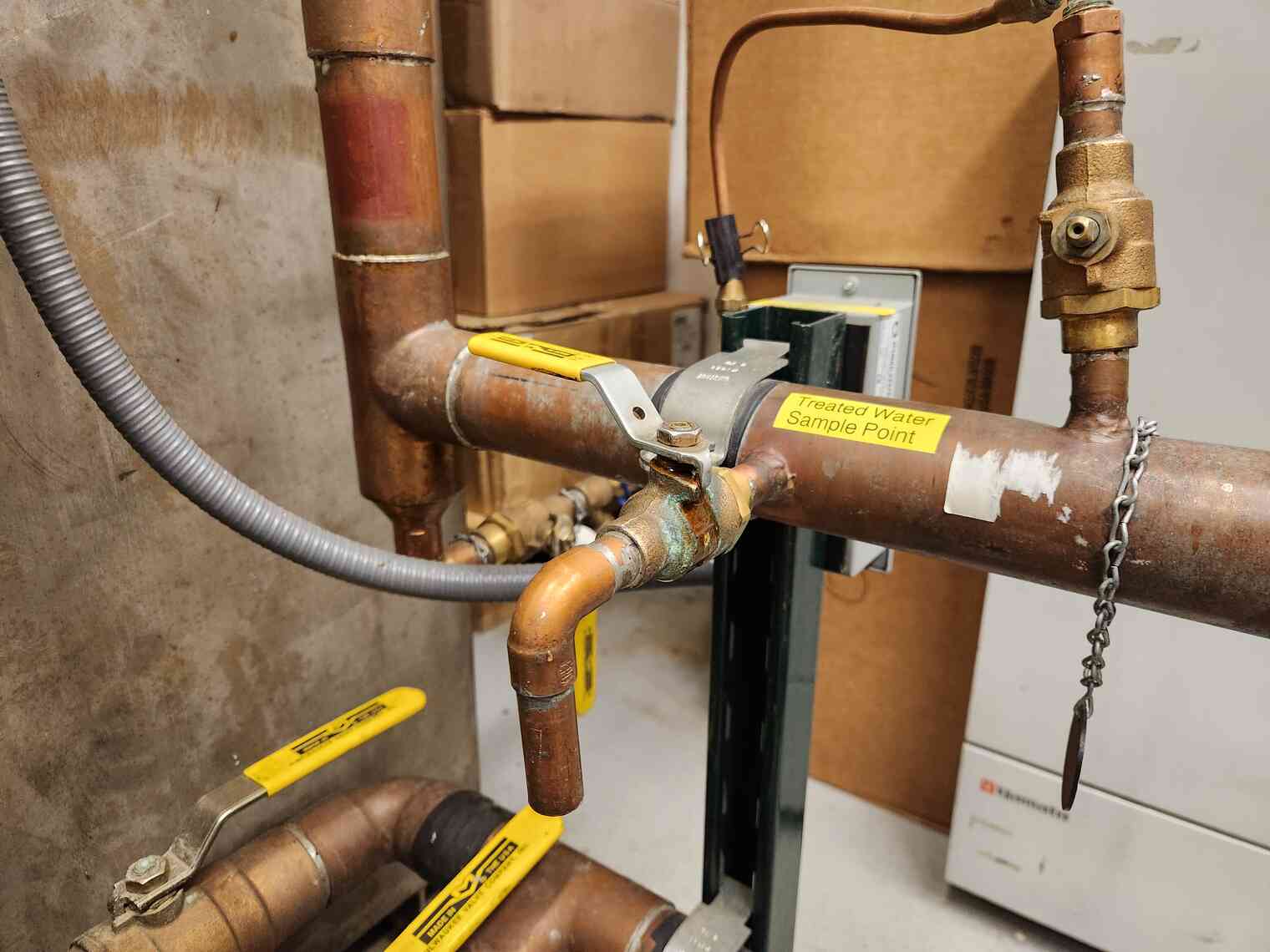It’s been about six weeks since we left off, shortly after Sunset. We watched the sun descend in the sky and dip below the horizon. It was Nautical Twilight, and the sky was alive with vibrant colors:
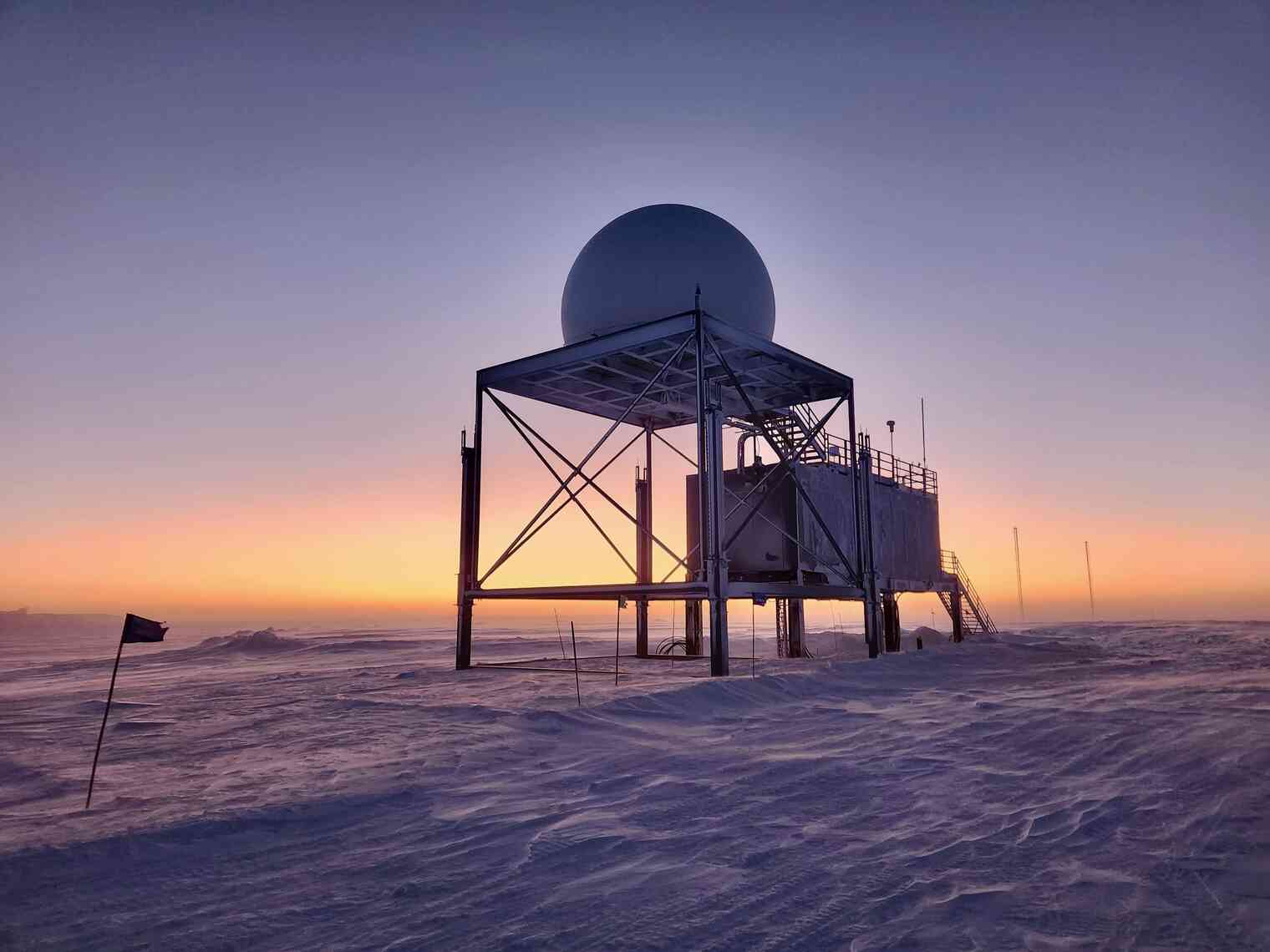
Since then, the lingering light has faded, and we’ve marched steadily toward darkness:
You may notice the red lights on buildings. This is a good time to talk about wintertime outdoor illumination at the South Pole!
At the end of the day, we’re all here to support science. There are a number of science projects that can only happen during the winter here, because of the unique environmental characteristics of the South Pole (darkness, elevation, weather, air quality, etc). A few of these are extremely sensitive to broad-spectrum visible light.
If you’d like to read more about the NSF-sponsored science happening in Antarctica, you can check out the 2022-2023 Science Planning Summaries here (3 MB PDF).
To protect the science experiments, we work hard to avoid any stray broad-spectrum light outside. This means all our station windows are covered, all our exterior navigation lights are tinted red, and we’re only permitted to use red headlamps and flashlights while walking outside.
Once it becomes closer to fully dark, these lights take on a surreal quality.
I showed these next few photos to a friend, who remarked “It looks like scenes from a movie you definitely don’t want to be in”. I have to agree. Just waiting for the zombies to show up.
When you go outside, you pass through a vestibule with red lights, which helps prevent the broad-spectrum station light from getting out. It’s still fairly abrupt – in just a few seconds, you go from normal interior heat and light, to the bitterly cold and red-tinted outdoor landscape:
Speaking of science, one of the more visually stunning projects we have here involves a LIDAR sensor, mounted on the roof of our elevated station, with a visible laser beam pointing upward. We affectionately call it the “space laser”, and it contributes to the feeling of awe at the otherworldly character of this place:
I’d be remiss to not mention the Aurora Australis somewhere in this post. We’ve been treated to some wonderful, vibrant displays so far, even though it’s still early in the night.
In the 9 months I’ve been in Antarctica, my trusty cell phone has taken some truly remarkable photos under challenging conditions. Nearly every photo I’ve taken for this blog has been a cell phone photo. But I’ve finally found its limits. I simply cannot, for the life of me, take a decent aurora photo.
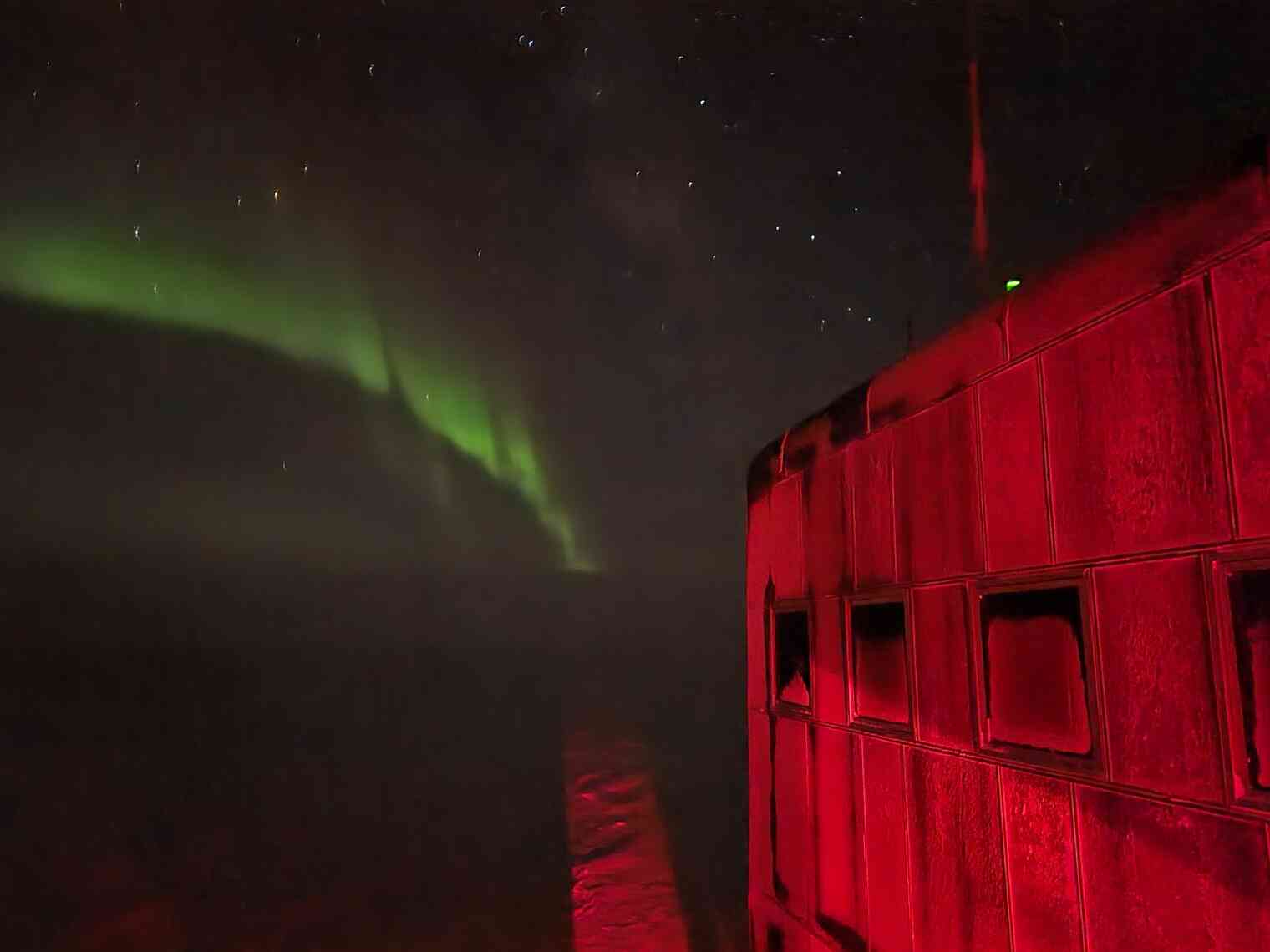
But fear not! I have colleagues here who have high-quality camera equipment with them, and who have graciously allowed me to showcase their photos:
On May 12, 2023 at 10:24am NZ time, the sun officially passed 18 degrees below the horizon. This marked the end of Astronomical Twilight, and the beginning of the true night. We won’t see any light from the sun until August 3.
But that doesn’t mean it’s dark all the time! We still have regular lunar cycles.
There’s a lot of lore about the harsh “8 months of winter” here at Pole.
It’s true that we’re isolated for 8 months. There are no flights, in or out, from mid-February until mid-October, mostly because of the extreme cold and the sheer logistical difficulty of sustaining flight operations. I talked about this a lot more in Last Flight Out.
But we only have about 40 days of true, absolute darkness!
The sun sets in mid-March and rises in mid-September. True “night” (after twilight) is only mid-May through early-August. Roughly half of the time, we have light from the moon.
And the moon is bright! Obviously there’s a bit of brightness correction going on with these cell phone photos, but not much. You can navigate outside without a flashlight, guided by just the light from the moon.
These photos are from May 8, 2023, just a few days before the end of Astronomical Twilight. The sun is basically gone – all of this light is from the moon!
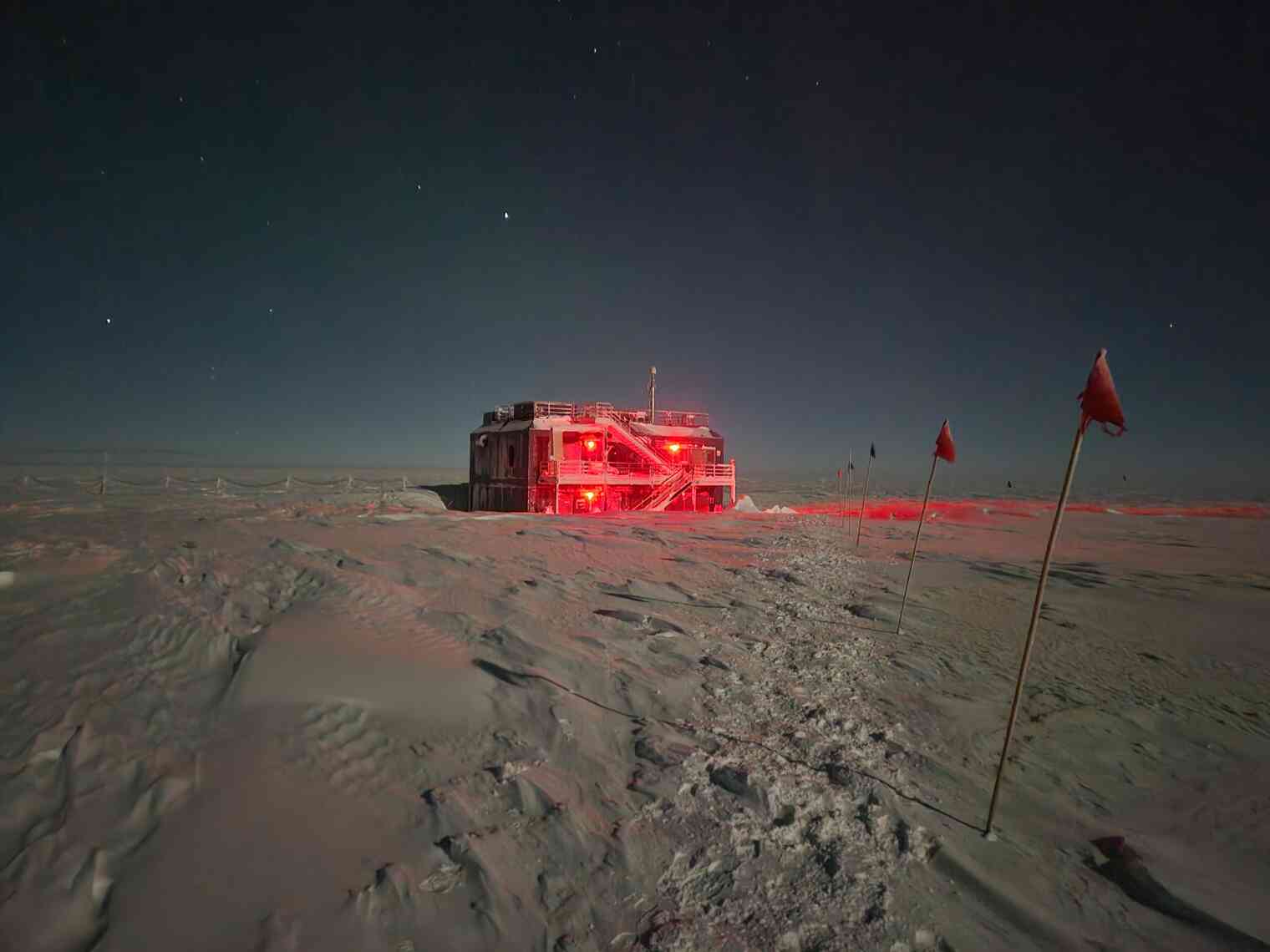
When you’re walking alone outside, it really does feel like you’re on another planet:
And that’s nighttime at the South Pole! Dark and otherworldly. Guided only by red beacons and moonlight, we’re the only living creatures, for hundreds of miles in all directions, keeping this remote outpost going.
We’re actually going through a bit of a heat wave right now! It’s quite a bit warmer than it was for my last post in April. Believe it or not, you really can feel a difference between -40°F and -80°F. At -40°F, I get a few extra seconds to fiddle with my phone camera outside, and I don’t need toe warmers in my boots. A beautiful day for a walk around station!
Until next time!







